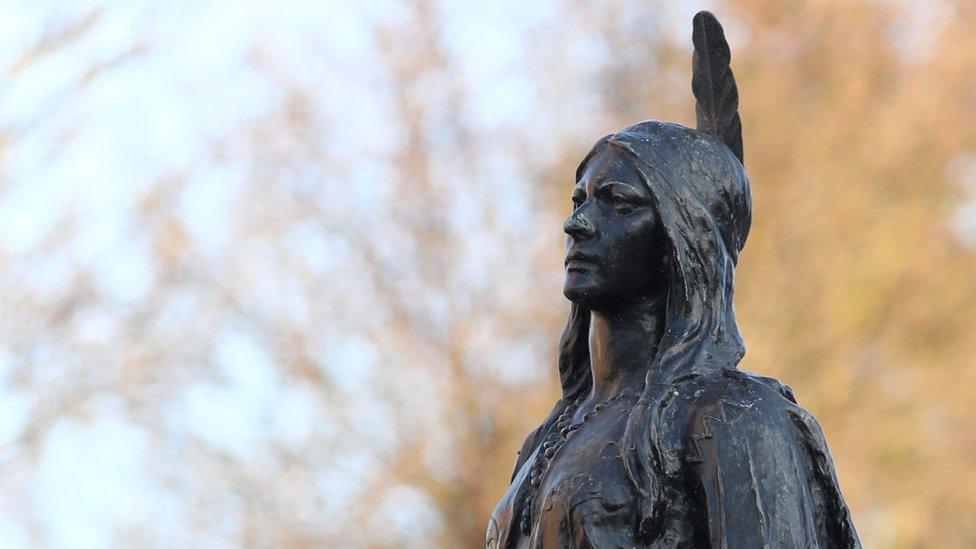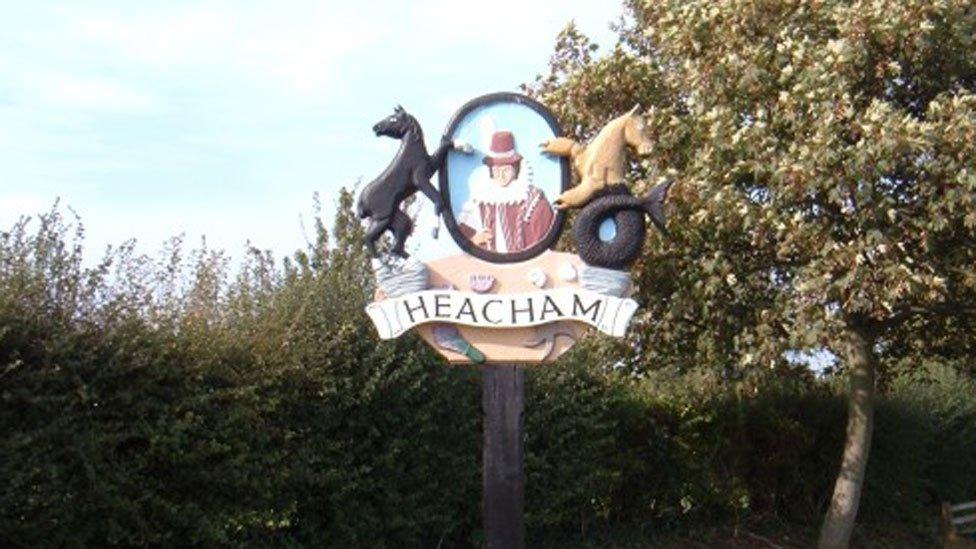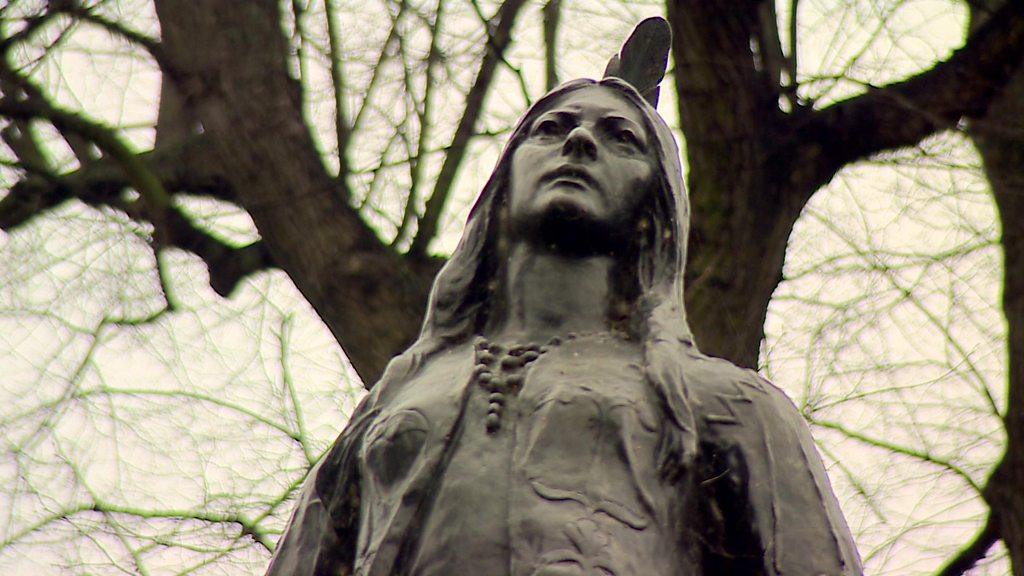Pocahontas Heacham mulberry tree legend faces DNA test
- Published

The tree (far right) is planted at Heacham Manor Hotel in Norfolk
She was famed as a colonial peacemaker - but now DNA analysis is to be used to test part of the 400-year-old legend of when Pocahontas came to England.
After helping save a colonialist's life the Native American travelled to England in 1616 with husband Jon Rolfe.
Legend has it Pocahontas planted a mulberry tree at a manor house in Heacham, Norfolk, where Rolfe was from.
Now, Forestry Commission (FC) experts will carry out the DNA testing on the tree in a bid to prove the link.
The test comes as the 400th anniversary of her death is marked with a parade in Gravesend, Kent, where she died on her journey home to Virginia in 1617.
The tree - in the same spot, but now in the grounds of Heacham Manor Hotel - still produces fruit.

From prisoner to palace guest

A life-size bronze effigy of the Native American stands in Gravesend, Kent
Pocahontas was the daughter of Chief Powhatan, the leader of a tribe of Native Americans
Legend has it that after adventurer Captain Smith was captured by the tribe she negotiated his release, earning a reputation as a peacemaker
After Smith returned to England, she was captured and spent a year in the English encampment
There she converted to Christianity and married the colonist John Rolfe, adopting the name Rebecca Rolfe
During her time in England she was received by the court of King James I
Pocahontas was buried in the chancel of St George's Church, Gravesend, on 21 March 1617

Rolfe and Pocahontas spent 10 months in England before her death.
During this trip it is thought Pocahontas and her family visited the family home of her husband in Heacham - although there is little evidence of this.
The FC's Northern Research Station (NRS) in Roslin has confirmed it will carry out out initial DNA research work on the tree.
The idea was mooted by retired college lecturer Christine Dean who lives in Heacham and has extensively researched the Pocahontas legend.
She said she was fascinated by the story because "it's not just village history, it was a crossroads in world history".
The hotel said that as soon as fresh mulberry leaves shoot in May, a six-inch branch will be sent to the research lab for testing.

The Heacham village sign has a picture which depicts Pocahontas
It is hoped this will lead to looking at the DNA connection between the hotel's tree and another three very old mulberry trees identified in the UK - at Buckingham Palace, Syon House in west London and Narford Hall, Norfolk.
It is thought Pocahontas could have visited one of these trees and collected seeds, and research could establish whether they are forebears of the Heacham tree.
Graham Bray, from the hotel, said that if the DNA was similar then it is "likely" that Pocahontas planted it, but "obviously not conclusive".
- Published16 March 2017
